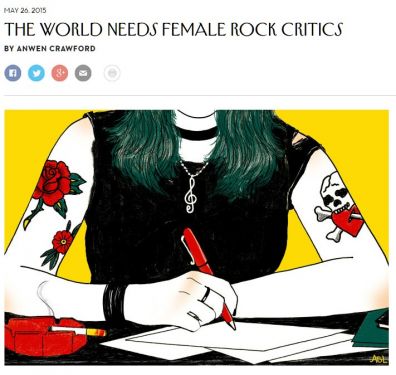“The problem for women is that our role in popular music was codified long ago. And it was codified, in part, by the early music press. In the effort to prove the burgeoning rock scene of the sixties a worthy subject of critical inquiry, rock needed to be established as both serious and authentic. One result of these arguments—the Rolling Stones vs. Muddy Waters, Motown vs. Stax, Bob Dylan vs. the world—was that women came out on the losing side, as frivolous and phony.
Perhaps fiction and memoir, more than criticism, provide space for female writers to dissect all that is maddening and wonderful about popular music: the spectacle, the chicanery, the beautiful lies it tells us. But there is plenty of need for female music critics yet. “Take it easy, babe,” Mick Jagger sang in “Under My Thumb,” still as glistering a slice of unrepentant misogyny as ever it was, unredeemed by time or by the million screaming girls who wriggled beneath Jagger’s commands. In a 1971 essay, Ellen Willis argued that Jagger’s “crude exhibitions of virility” were less sexist than the “condescending” pose of a bohemian like Cat Stevens; insofar as rock, she wrote, “pitted teenage girls’ inchoate energies against all their conscious and unconscious frustrations, it spoke implicitly for female liberation.” I don’t entirely agree with Willis’s defense of the Stones, but I do recognize the difficult trade-off she describes, between the freedom that rock can feel like, for a woman, and the subjugation that it might celebrate. It’s between these boundaries that the female critic works, hoping to clear a path.”
– Anwen Crawford, “The World Needs Female Rock Critics”







